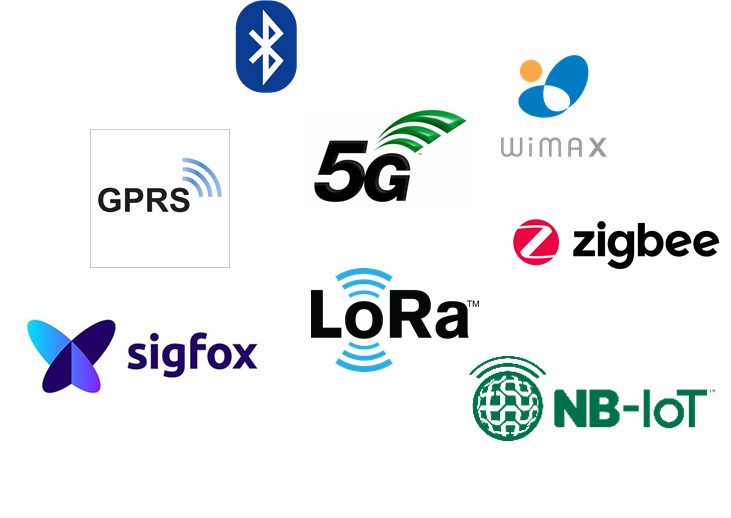
IoT communication networks: from GPRS to 5G
When we talk about IoT we can get “confused” with different words: Sigfox, GPRS, 6lowpan, LTE and it continues to grow now with 5. All these represent different communication networks that can be used to connect devices with sensors that help us to share the actions taken.

We could say that unfortunately there is no standardization in IoT networks, but we are better going to see the glass half full, and we are going to see it as having so much variety we can find the one that best adapts to each situation.
Tell me what you need, and I'll tell you which network you want …
For the choice of the communication network, the amount of information you want to send and how often is decisive. Based on this, the solution can now be routed to one network or another. The cost of the devices, the architecture, or the power supply, among others, also matters. Some examples are the following ones:
Sigfox
Its main characteristic is that it sends small data packets and at most six times per hour. It may seem scarce, but the reality is that it can be more than enough in some scenarios such as meteorological stations in the agricultural sector. These small shipments of information also mean that its consumption is minimal, so that your battery can last for years.
LoRa
It allows sending small data packets (in this case not limited by size, but by air time). It allows the creation of private networks. Its low consumption means that its maintenance is minimal due to the long life of the battery. At an industrial level and in projects in the water sector, it is having great relevance.
Nb-IoT
Unlike the previous ones, it uses the mobile network deployed and has good indoor coverage. It coincides with the previous ones in the low consumption that maximizes the life of the batteries. An example of a use case is that of remote meter reading.
2G/3G/4G
Although it is true that in some countries the 3G network is already being dismantled, it is already going to 4G but with an eye on 5G, the one that will best resist is 2G because today there are many devices that use this network deployed around the world. It has the advantage of almost global coverage, but against it is that the consumption of communications is much higher and therefore the life of the batteries.
So then, will 5G be the standard that will apply to everything?
Certainly, 5G is going to be a revolution in terms of data speed, latency, number of connected devices, etc. Thanks to it, real time is not going to be limited to sending sensor measurements, but rather, at the level of image sending, the impact will be more than noticeable. It will allow assistance in surgeries remotely, control of robots, vehicles, use of AI algorithms deployed on the cloud, etc. Devices that have a 5G communication module will exchange information much faster. It can help IoT projects, but not all of them at the moment. Although 5G speaks of lower energy consumption, it does not seem that it will be enough to allow devices with batteries that last for years as it happens with other technologies such as Nb-IoT, Lora or Sigfox..
Devices that require batteries, at least for now, will continue to use other communication networks that minimize its replacement. The implementation of 5G in these types of devices will be closely linked to their improvement. Currently, work is being done on different technologies to improve batteries, recharging or the use of communications, but in the short term, typical IoT communication networks will remain. Another different thing is the case of devices that do not use batteries and that are connected to the network, there it will be much easier for them to be updated with communication modules that support 5G and that they can enjoy its advantages.
But there is still more …
In more than one IoT project you can find that there is a network that is phenomenally suited to the use case, but there is no coverage in the area you need it. This is especially significant in traceability projects that are deployed globally:
- Networks that are implanted in Asia, maybe they are not yet so in Europe, or a network with a large deployment in Europe does not have enough coverage in America.
- The same occurs with the devices: not all include all communication networks, nor do they all have the same cost.
- Integration capacity: there are devices that require going through a manufacturer's proprietary platform, while others provide flexibility when collecting and transmitting data.
Conclusion
When tackling an IoT project, choosing the right communication network is essential. Not all of them are adapted to the needs of each project. But not all devices fit all networks, nor all scenarios. At Izertis, we have the knowledge of networks, device manufacturers and specialists in all the technologies that can add value to your IoT projects. Before starting an IoT project, get advice from us.

